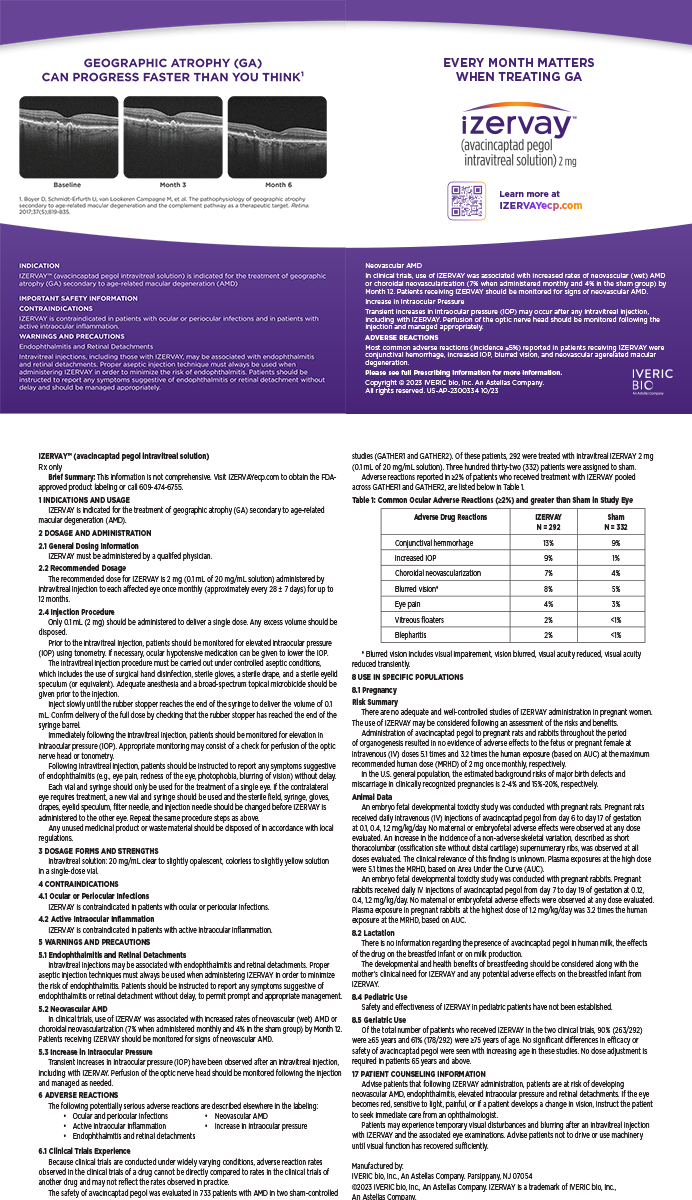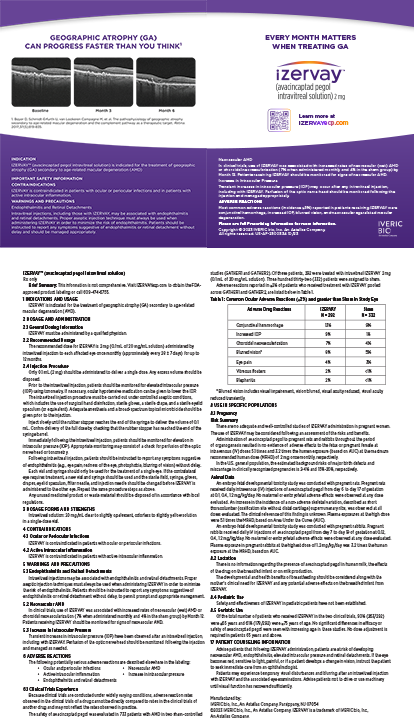JAMES P. GILLS, MD
I believe this patient would be best served by a toric lens. I prefer the AcrySof IQ Toric IOL (Alcon Laboratories, Inc., Fort Worth, TX), because it is biaspheric, is extremely stable, and provides high-quality vision and correction of astigmatism. I have chosen topography and the IOLMaster to give me reliable measurements for this case and thus have selected an 18.50 D AcrySof IQ Toric IOL (SN6AT5), which would correct 2.00 D of astigmatism. The wound will be 45° to the axis of the astigmatism, and I will confirm axial placement with a surgical keratometer, which I find yields much greater accuracy than manual marking of the cornea.
The toric lens must be aligned perfectly with the astigmatism in order to provide optimal vision. Off-axis placement produces varying degrees of visual disturbances such as double vision and decreased resolution. It is very important that the toric lens not be excessively powered, and it is essential that the axis be as close to perfect as possible for the best visual results. Rotations of the lens are simple to do and well worth the effort to achieve the optimal visual outcome. Glasses may correct residual astigmatism but not as well as if the lens is on axis or if the patient wore glasses alone over a spherical IOL. Thus, it is important to be capable of rotating toric lenses to reduce the possibility of a residual optical handicap.
Limbal relaxing incisions are another option for correcting astigmatism, but they are not as accurate as a perfectly aligned toric lens.
WARREN E. HILL, MD
This case illustrates two fundamental issues in the consideration of a toric IOL. First, is the patient’s corneal astigmatism regular? The axial power map shows irregular astigmatism, with an isolated steep area that is inferior and temporal. This irregular astigmatism also appears to be generating horizontal coma, with a value of -1.25 μm. A toric IOL is generally indicated for the correction of regular astigmatism, preferably with similar amounts of steepening on both sides of the corneal vertex. At best, adding regular, pseudophakic lenticular astigmatism behind a cornea with irregular astigmatism risks an undercorrection at an unanticipated axis. At worst, it has the potential to increase an already abnormal third-order aberration profile.
The second issue is the way in which the power difference between principal meridians is measured prior to the placement of a toric IOL. Because the various forms of keratometry, or simulated keratometry, sample different areas and/or employ different algorithms, there are often significant differences in the results that they give—in this case, 1.25 D versus 2.37 D. I have found that the 3.0- to 3.2-mm zone of manual keratometry has one of the best overall correlations with the amount of astigmatism that surgeons are looking to correct with a toric IOL.
If this were my patient, I would counsel her that the type of corneal astigmatism evident on a topographic map makes her less than an ideal candidate for a toric IOL. The good news is that she has a normal amount of positive spherical aberration. I would therefore offer her one of the two commonly available monofocal aspheric lenses that add negative spherical aberration as the best option for her upcoming cataract surgery.
DOUGLAS D. KOCH, MD
I believe more data are needed for this unusual case. First, to understand the visual impact of the topographic irregularity, we need to know the astigmatic correction in her glasses and what her vision was with this correction before the cataract developed. To better understand the etiology of this irregular astigmatism, we need to know if her astigmatism has been stable or changing during recent years. To further seek a cause of this asymmetric topography, we need a topographic image with small Placido rings. Were the keratometry mires irregular? I suspect that there is a discernable cause such as epithelial basement membrane dystrophy or subtle Salzmann’s nodular degeneration. If indeed topographic mires with fine Placido rings were abnormal, I would re-examine the cornea for focal pathology.
Assuming the presence of focal pathology, I would recommend treating it first and performing cataract surgery 3 months later. If no focal corneal pathology were evident, I would consider a single corneal relaxing incision placed along the steep semi-meridian, based on both the map provided and the new one I would obtain. Next, I would measure the corneal asphericity to determine the IOL’s asphericity. The cornea appears to be oblate, so an IOL with negative asphericity would likely be indicated. I would counsel the patient about the difficulty of adequately correcting her astigmatism and the probable need for spectacle correction postoperatively. This irregular astigmatism would also make it more challenging to accurately select an IOL power.
If the patient were unhappy with her postoperative vision, a final option would be a referral outside the United States for topographic-guided excimer laser corneal ablation.
JIMMY K. LEE, MD
Toric IOLs are touted as a sure bet, and many cataract surgeons claim that their toric IOL patients are some of the happiest in their practices. The question in this case is what data to enter into the online toric IOL calculator. Not only does the amount of astigmatism vary from 1.25 to 2.32 D, but the axis also ranges from 141° to 159°. This should raise concern, because studies have shown that 1° of rotation or misalignment of the toric IOL results in a 3.3% loss of effective IOL power and 30° of rotation negates the cylindrical correction.1
As done in this case, it is crucial to keep the cornea unadulterated in order to measure astigmatism accurately. One of the most common reasons for inaccurate or inconsistent readings is dry eyes or ocular surface disease. In general, I have found manual keratometry to be the most trustworthy method for toric IOL candidates. In cases of irregular astigmatism such as this one, however, manual keratometry may be difficult to perform due to distorted mires. A subjective manifest refraction and wavefront analysis would also be unreliable due to the cataract.
In this case, I would recommend cataract extraction with a nontoric IOL. An intraoperative option would be to use ORange intraoperative wavefront aberrometer (WaveTec Vision, Aliso Viejo, CA) to help guide the placement of limbal relaxing incisions. A postoperative option would be to measure the manifest refraction and cross-check the cylindrical magnitude and axis with the wavefront refraction. If these measurements were consistent, I would treat the residual refractive error with PRK or LASIK.
LINDA M. TSAI, MD
I would proceed with caution in this case, because the inconsistency in the power and axis of the patient’s astigmatism measurements is of concern. The second indication of trouble is the presence of irregular astigmatism on automated topography. These test results suggest that this patient is not a good candidate for a toric IOL.
How important is automated topography for toric IOLs? My preoperative evaluation includes automated topography for all cataract surgery patients, even though this test is not reimbursed by insurance. Automated topography can flag conditions such as irregular astigmatism and forme fruste keratoconus, and it is arguably the standard of care to perform this testing preoperatively.
I would re-evaluate the patient for possible corneal causes of her irregular astigmatism—namely, the presence of scars, anterior basement membrane dystrophy, and/or dry eye disease. In other patients, decentered refractive laser ablations and pterygia can also cause irregular astigmatism. If I had any doubt regarding the topography’s accuracy, I would repeat the measurements. If indicated, I would offer her a trial of Restasis (Allergan, Inc.) and aggressive ocular lubrication for 1 to 2 months prior to retesting.
Candidates for toric IOLs with regular astigmatism (particularly low amounts) may have some variability in their keratometry readings. I note all preoperative measurements of corneal power and axis and often repeat those that are not consistent. I tend to rely mostly on manual keratometry, which measures a larger area of the central corneal than automated keratometry or the IOLMaster. Theoretically, manual keratometry should be the most accurate method, especially for power readings. It is also the most subject to technician error, however, especially for the determination of cylindrical axis. I only use the readings from manual keratometry if they are generally consistent with the other preoperative measurements.
Because of this patient’s irregular astigmatism, I would implant a monofocal aspheric IOL. Due to her ocular condition, I would warn her that, postoperatively, she will have some decreased uncorrected vision and possibly some limitation of her best-corrected vision.
Section Editor Bonnie A. Henderson, MD, is a partner in Ophthalmic Consultants of Boston and an assistant clinical professor at Harvard Medical School. Thomas A. Oetting, MS, MD, is a clinical professor at the University of Iowa in Iowa City. Tal Raviv, MD, is an attending cornea and refractive surgeon at the New York Eye and Ear Infirmary and an assistant professor of ophthalmology at New York Medical College in Valhalla. Dr. Henderson may be reached at (781) 487-2200, ext. 3321; bahenderson@eyeboston.com.
Warren E. Hill, MD, is in private practice at East Valley Ophthalmology in Mesa, Arizona. Dr. Hill may be reached at (480) 981-6130; hill@doctor-hill.com.
Douglas D. Koch, MD, is a professor and the Allen, Mosbacher, and Law chair in ophthalmology at the Cullen Eye Institute of the Baylor College of Medicine in Houston. Dr. Koch may be reached at (713) 798-6443; dkoch@bcm.tmc.edu.
Jimmy K. Lee, MD, is the director of cornea and refractive surgery and an assistant professor of ophthalmology at the Yale University School of Medicine in New Haven, Connecticut. He acknowledged no financial interest in the product or company he mentioned. Dr. Lee may be reached at (203) 785-2020; jimmy.k.lee@yale.edu.
Linda M. Tsai, MD, is an associate professor in the Department of Ophthalmology and Visual Sciences at Washington University in St. Louis. She acknowledged no financial interest in the products or companies she mentioned. Dr. Tsai may be reached at (314) 996-3300; tsai@vision.wustl.edu.
- Shimizu K,Misawa A,Suzuki Y.Toric intraocular lenses:correcting astigmatism while controlling axis shift.J Cataract Refract Surg.1994;20(5):523-526.


